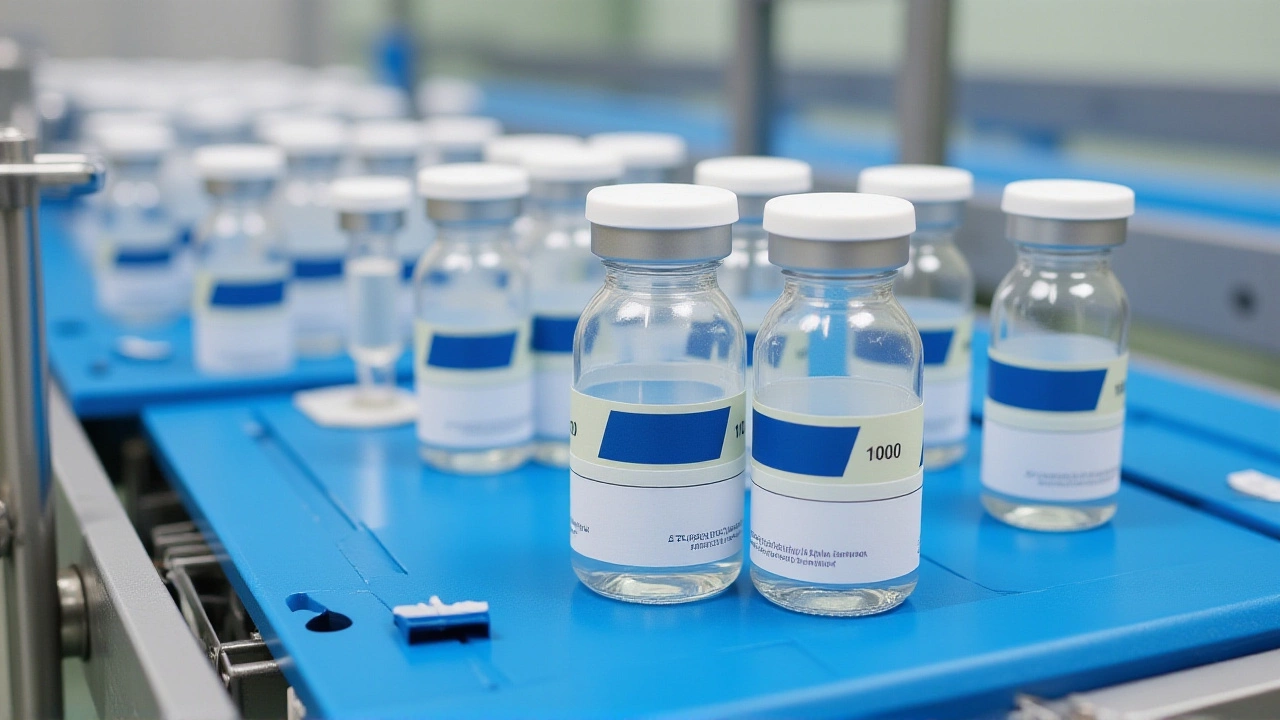As October 2025 closes, Wall Street’s final quarter playbook is out—and it’s not what most investors expected. With the S&P 500 up 14.8% year-to-date and tech giants like Apple and Alphabet roaring ahead, the question isn’t whether markets will keep climbing—it’s how they’ll climb. Leading firms like Nuveen, Zacks Investment Research, Morningstar, Inc., and Ameriprise Financial are all aligned on one thing: the rally isn’t over, but the winners are changing.
Why AI Isn’t the Only Game in Town Anymore
Nuveen’s October outlook paints a nuanced picture. Yes, AI-driven tech remains the engine. But the firm’s "barbell" strategy is quietly reshaping portfolios: one side leans hard into high-growth tech firms with pricing power and clean balance sheets; the other leans into income generators—dividend growers, infrastructure plays, utilities, and healthcare. It’s not about chasing the next breakout stock. It’s about surviving the next volatility spike. "The market’s gotten ahead of itself," says Nuveen’s strategy team. "Companies that can raise prices without losing customers? That’s the new moat. And it’s not just Silicon Valley anymore. Look at healthcare providers with recurring revenue from diagnostics. Or water utilities with multi-decade contracts. They’re not flashy—but they’re stable." The preference for U.S. large caps over small caps and emerging markets isn’t just about scale—it’s about resilience. With global trade tensions simmering and regulatory shifts looming, U.S. firms with domestic revenue streams and strong cash flows are seen as safer anchors.Zacks’ Hidden Gems: Growth at Any Cost?
Then there’s Zacks. Their list of five "Best Stocks to Buy Now" reads like a rollercoaster. Aris Mining Corporation (ARMN) jumped 34% in 12 weeks, with projected EPS growth of 260% and sales up 73%. Sanmina (SANM) isn’t far behind, with 87% EPS growth and a Zacks Rank #1. But the real head-turner? CorMedix (CRMD). With a forward P/E of just 3.38 and projected EPS growth of over 1,000%, it’s either a miracle turnaround—or a trap waiting to explode. Zacks gives CRMD a "Strong Buy" based on estimate revisions, but the Style Score for Momentum is a C. That’s a red flag. One analyst called it "the ultimate contrarian gamble"—a company on the brink of FDA approval for a new drug, with no revenue to speak of yet. Investors should tread carefully. The same goes for LendingTree (TREE), down 25% but with 360% EPS growth projected. Is this a value play—or a value trap?Morningstar’s Quiet Winner: PepsiCo
While everyone’s fixated on AI, Morningstar, Inc. quietly flagged PepsiCo (PEP) as a standout. Trading at a 13% discount to fair value, yielding 4%, and with a four-star rating, it’s the antithesis of a tech bubble stock. "People forget that inflation doesn’t go away just because interest rates drop," said Morningstar analyst Susan Dziubinski in their October 6 video. "PepsiCo raises prices every year. People still buy chips and soda. Their distribution network is unbeatable. This isn’t glamorous—but it’s reliable." The same logic applies to healthcare. Morningstar’s Europe strategist, Michael Field, pointed to medical device makers and consumables as undervalued, trading at a 5% discount to intrinsic value. These aren’t growth stocks. They’re inflation hedges with recurring revenue.The Q4 Pattern: History Says Keep Going
Ameriprise Financial’s data is hard to ignore. Since 1928, when the S&P 500 was positive year-to-date through Q3, Q4 returned an average of +4.4%. Since 1990? That number jumps to +6.1%. And 88.5% of those years ended higher. The S&P rose 7.8% in Q3 2025. The NASDAQ? +11.2%. The Russell 2000? A surprising +12%. Small caps are catching up. But Ameriprise warns: "This is the quarter where earnings matter more than momentum." Big Tech carried the market since April. Now, investors need proof these companies can monetize AI—not just hype it. "If Microsoft’s Azure AI revenue doesn’t hit $20 billion this quarter," says Ameriprise’s analyst, "the rally could stall." Real assets are also in focus. Nuveen recommends non-U.S. industrial real estate, data centers, and solar/battery storage in private markets. These aren’t flashy, but they’re tied to long-term trends: digitization, decarbonization, and demographic shifts.
What’s Next? Volatility as a Tool, Not a Threat
The market’s stretched. Valuations are high. But history suggests the odds still favor gains. The key now isn’t timing the top—it’s managing the dips. Nuveen’s barbell approach is gaining traction: aggressive tech exposure balanced with income and stability. Morningstar’s preference for dividend payers like PepsiCo offers a psychological anchor. Zacks’ high-risk picks? Treat them like lottery tickets—small allocations, big upside potential. And if Q4 earnings disappoint? That’s not a reason to sell. It’s a reason to buy more of the quality names. As one portfolio manager put it: "Markets don’t crash because they’re overvalued. They crash because they’re overhyped. We’re seeing the difference now."What’s the Big Picture?
This isn’t just about stocks. It’s about a shift in investor psychology. The era of blindly chasing growth is over. The new mantra: profitable growth. Companies that can grow without burning cash. That raise prices without losing customers. That pay dividends while investing in AI. The winners in Q4 won’t be the loudest. They’ll be the most sustainable.Frequently Asked Questions
Why is Nuveen favoring U.S. large caps over emerging markets?
Nuveen cites heightened vulnerability to global trade policy shifts and currency instability in emerging markets. Meanwhile, U.S. large caps benefit from domestic demand, stronger balance sheets, and tax advantages. The tech dominance of American firms—especially in AI—gives them a structural edge that emerging economies can’t yet match.
Is CorMedix (CRMD) a safe investment despite its 1,055% projected EPS growth?
No—it’s a high-risk speculative play. CRMD has no current revenue and relies entirely on regulatory approval for a new drug. While the projected EPS growth is staggering, it’s based on future assumptions, not current performance. Investors should limit exposure and treat it as a long-shot bet, not a core holding.
Why does Morningstar recommend PepsiCo over tech stocks right now?
PepsiCo offers a rare combination: a 4% dividend yield, pricing power in inflationary times, and a 13% discount to Morningstar’s fair value estimate. While tech stocks have surged, PepsiCo’s predictable cash flow and global distribution make it a defensive anchor during market volatility—a proven strategy in uncertain quarters.
What’s the historical likelihood of a Q4 market drop in 2025?
Since 1990, when the S&P 500 entered Q4 with a positive year-to-date return, it finished the quarter higher 88.5% of the time. Even with stretched valuations, historical patterns suggest the odds favor gains—unless corporate earnings severely disappoint. The real risk lies in overhyped expectations, not market mechanics.
Which sectors are most likely to outperform in Q4 2025?
According to Nuveen and Ameriprise, technology firms with proven AI monetization, healthcare providers with recurring revenue, and utilities with regulated income streams are top contenders. Real assets like data centers and industrial real estate outside the U.S. also show strong fundamentals. Avoid speculative small caps unless they have clear catalysts.
Should I sell my tech stocks before year-end?
Not necessarily. The key is differentiation. Stocks with strong recurring revenue, cash flow, and actual AI revenue—like Microsoft or NVIDIA—are still sound. But those relying on hype without earnings? Consider trimming. Use volatility to rebalance, not panic. The goal isn’t to time the top—it’s to own the resilient.





